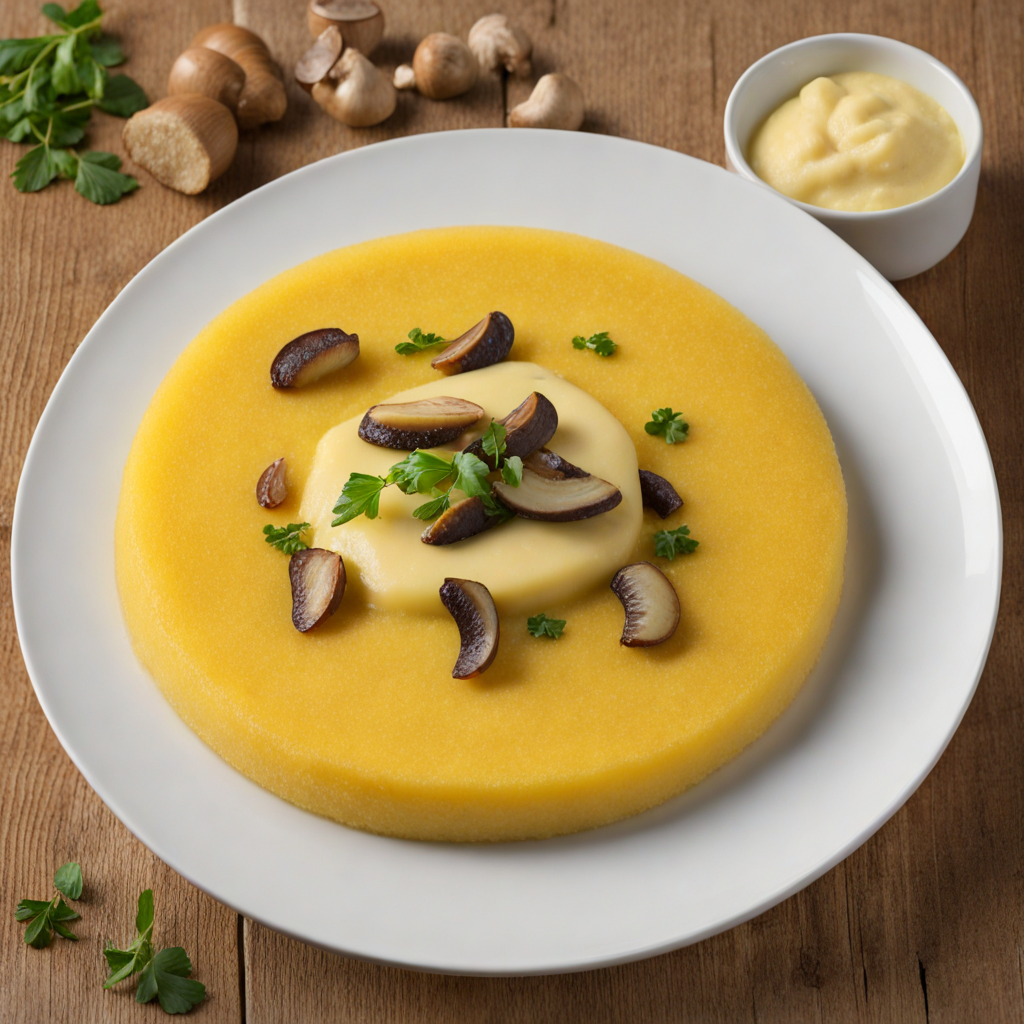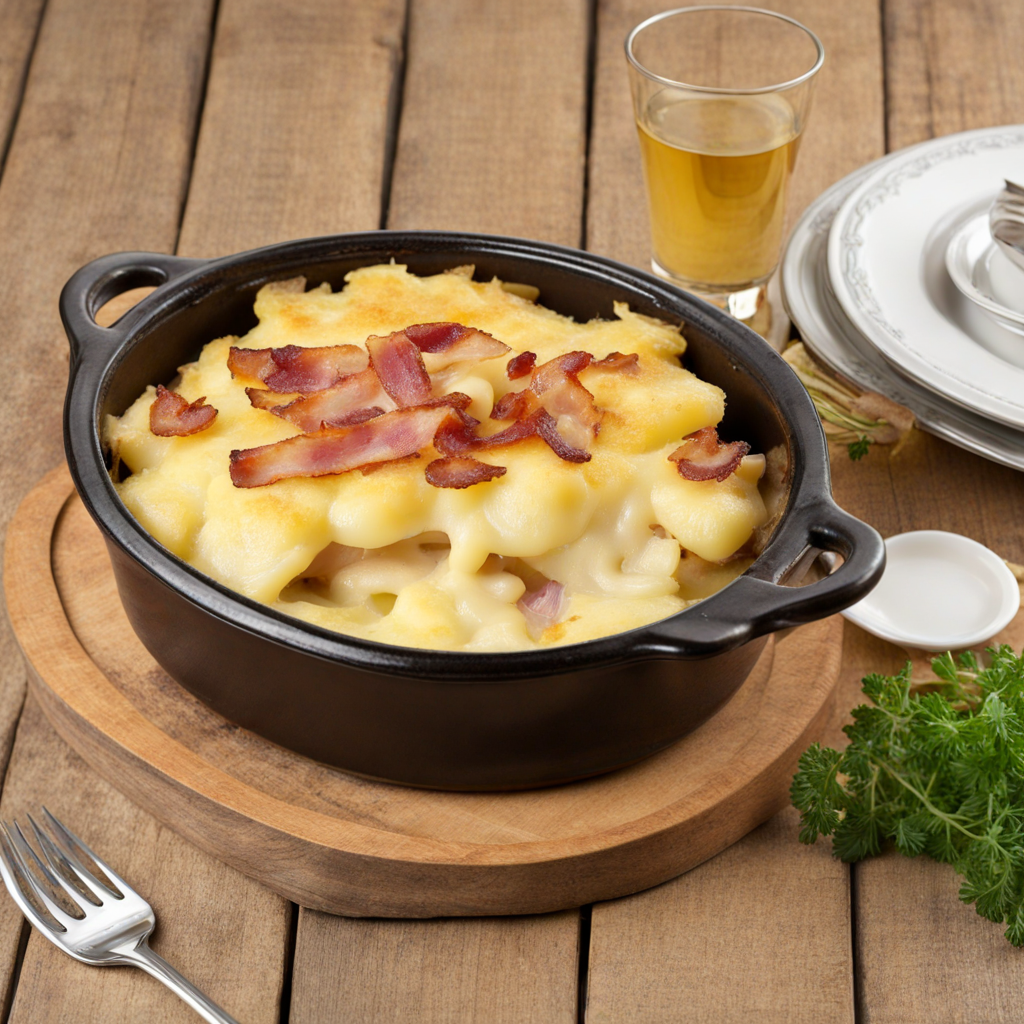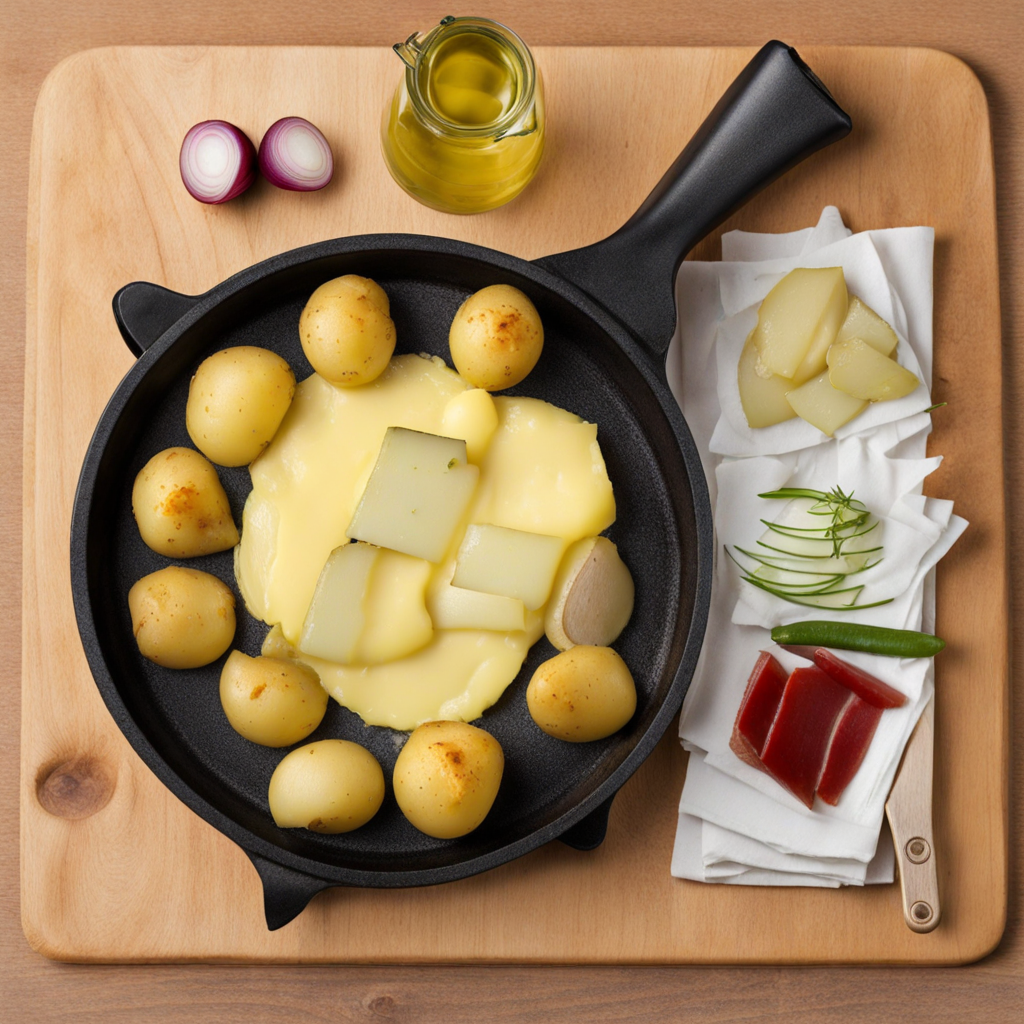Polenta
Polenta is a traditional dish that has found its way into the heart of Swiss cuisine, particularly in the southern regions like Ticino. Made from ground cornmeal, polenta can be prepared in various ways, offering a versatile base that can complement a wide range of flavors. The texture can vary from creamy and soft when freshly cooked to firm and sliceable when allowed to cool and set. The vibrant yellow hue of polenta is not only visually appealing but also indicative of the high-quality corn used in its preparation, making it a wholesome and hearty choice for any meal. In Switzerland, polenta is often enriched with local ingredients, such as cheese, butter, and herbs, elevating its flavor profile. One popular variation is "polenta taragna," which incorporates buckwheat flour for a nuttier taste and a slightly darker color. This dish can be served as a comforting side to braised meats or as a main course topped with sautéed mushrooms, roasted vegetables, or a rich tomato sauce. The ability to adapt polenta to various toppings and accompaniments makes it a beloved staple among Swiss families. Beyond its delicious taste, polenta also embodies the essence of Swiss culinary traditions—simple, rustic, and grounded in local agriculture. Whether enjoyed in a cozy mountain hut or at a fine-dining restaurant, polenta is a dish that invites you to slow down and savor the moment. The warmth and heartiness of polenta, combined with its ability to absorb the flavors of accompanying dishes, create a truly unique taste experience that reflects the spirit of Swiss cuisine.
How It Became This Dish
A Journey Through Time: The History of Polenta in Switzerland #### Origins of Polenta Polenta, a staple dish in many regions of Italy and Switzerland, has roots that stretch deep into the annals of ancient history. It is primarily made from ground cornmeal, though variations exist using other grains such as barley, millet, or buckwheat. The term "polenta" itself derives from the Latin word “puls,” which referred to a porridge made from various grains. While the dish is most commonly associated with Northern Italy, its story in Switzerland is equally rich, shaped by the geography, culture, and agricultural practices of the region. Corn, the primary ingredient in modern polenta, was introduced to Europe following the Columbian Exchange in the late 15th and early 16th centuries. It thrived in the warm climates of the Italian peninsula and the southern regions of Switzerland. Prior to the arrival of corn, early Swiss inhabitants relied on a variety of grains, including spelt and rye, to create their porridge-like meals. This early form of polenta was a vital part of the diet for both the peasantry and the nobility, offering sustenance and energy for laborers and travelers alike. #### Cultural Significance In Switzerland, polenta is more than just food; it is a symbol of regional identity and cultural heritage. The dish is particularly associated with the Italian-speaking region of Ticino, where it is known as "polenta" and often enjoyed during communal gatherings and celebrations. The preparation of polenta can be a social event, where families or friends come together to stir the pot, share stories, and enjoy the fruits of their labor. This communal aspect of polenta preparation reflects the Swiss values of community and togetherness. Historically, polenta has served as a unifying food across social classes. While it was initially a peasant dish, its versatility and heartiness made it popular among the upper classes as well. It became a canvas for various toppings, from rich stews to simple cheeses, allowing it to adapt to both humble and refined dining experiences. This adaptability is crucial to its enduring popularity in Swiss cuisine. #### Development Over Time The evolution of polenta in Switzerland can be traced through its agricultural practices and culinary trends. In the 19th century, as the Industrial Revolution transformed the Swiss economy, the cultivation of corn became more widespread. Corn's ability to grow in diverse climates made it an appealing crop for farmers in the hilly terrains of the Swiss Alps. By the late 1800s, polenta had solidified its place as a staple food in many Swiss households, particularly in the Italian-speaking regions. The early 20th century saw a surge in the popularity of polenta as Switzerland embraced modern culinary practices. Chefs began to experiment with the traditional dish, incorporating local ingredients such as cheese, mushrooms, and seasonal vegetables. This innovation led to the emergence of dishes like "polenta concia," a rich version of polenta topped with melted cheese and butter, reflecting the Swiss penchant for dairy products. Polenta also gained prominence in the context of the global culinary movement of the late 20th century. As people sought to reconnect with traditional foods and embrace rustic cooking, polenta was rediscovered not only in Swiss homes but also in restaurants around the world. Chefs began to highlight its simplicity and versatility, offering polenta in various forms—creamy, sliced, or grilled—often accompanied by a medley of local flavors. #### Modern Interpretations and Global Influence Today, polenta remains a beloved dish in Switzerland, celebrated for its comforting nature and adaptability. It is often served alongside braised meats, roasted vegetables, or as a base for various sauces. Swiss chefs have continued to push the boundaries of traditional polenta, incorporating it into avant-garde culinary creations. Polenta fries, polenta cakes, and even polenta cakes for dessert reflect the ongoing innovation surrounding this ancient dish. Moreover, the globalization of food culture has contributed to an increased interest in polenta beyond Switzerland's borders. As international cuisine continues to gain popularity, polenta has found its way into the kitchens of home cooks and professional chefs alike. The dish's ability to pair with a wide array of ingredients makes it a favorite in diverse culinary traditions, from Italian trattorias to modern fusion restaurants. #### Conclusion The history of polenta in Switzerland is a testament to the enduring nature of traditional foods. From its humble beginnings as a peasant dish to its status as a beloved comfort food, polenta has woven itself into the cultural fabric of Swiss society. Its evolution reflects changing agricultural practices, culinary trends, and social dynamics, making it a fascinating subject for food historians and enthusiasts alike. As we continue to savor polenta in its many forms, we celebrate not only the dish itself but also the rich tapestry of history, culture, and community that it represents. Whether enjoyed in a rustic mountain cabin or a modern urban kitchen, polenta remains a dish that brings people together, bridging generations and cultures through the simple joy of shared food. In this way, polenta is more than just a meal; it is a story of resilience, adaptation, and the deep connections forged through the act of cooking and sharing.
You may like
Discover local flavors from Switzerland







